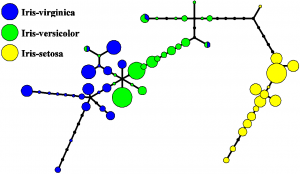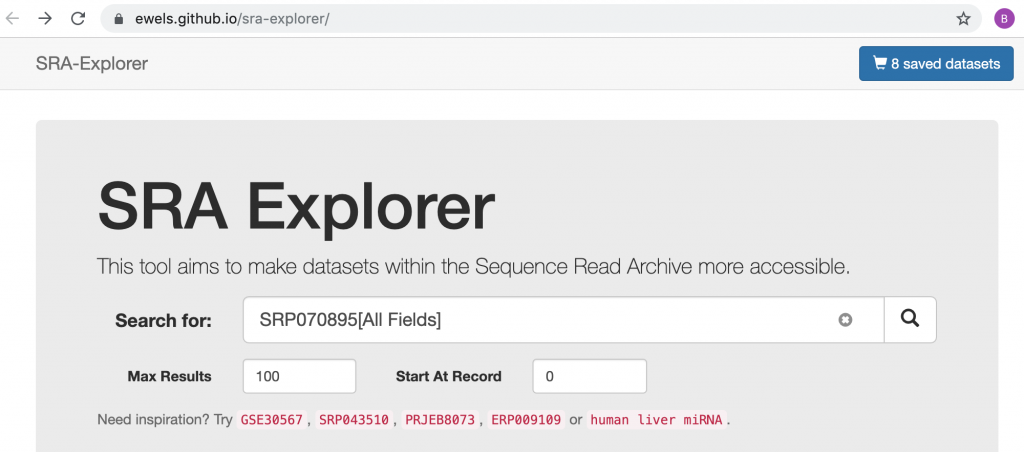-
Jean-Yves Sgro wrote a new post 2 years, 8 months ago
Just found this interesting set of “semester-biology ” (bio)informatics courses, from the original data carpentry site:
Web […]
-
Jean-Yves Sgro wrote a new post 2 years, 8 months ago
Last month I wrote a blog on my Biochemistry Blog about computing the number of residues within an alpha helix. This was in relation to a project concerning predicting a “coiled-coil” structure. It was […]

-
Jean-Yves Sgro wrote a new post 3 years, 4 months ago
I wrote a series on my Biochem Blog with this title: “Do yourself a favor: learn Markdown”
At the moment there are 4 episodes, but more might be coming. Rather than retype things here I’ll just post the […]
-
Jean-Yves Sgro wrote a new post 3 years, 9 months ago
Cross-posting from post: Download Google Drive Files using wget
The problem: transfer file between clouds
Files on Google drive can be shared between users, but the default access to the file is via we we […]
-
Jean-Yves Sgro wrote a new post 3 years, 10 months ago
The saying goes “if it ain’t broke don’t fix it!” – Oh Yeah. But sometimes it is inevitable…
Problem
Last month, under macOS Mojave (10.14) suddenly VMWare did not want to start, because of a security issue […] -
Jean-Yves Sgro wrote a new post 4 years ago
I just wrote an entry on my Biochem blog which I think would fit on this site:
Default preferences
I enjoy using R and RStudio, but I am always weary of upgrading R because that usually leads to some issue(s). […] -
Jean-Yves Sgro wrote a new post 4 years, 1 month ago
Even though PowerShell has been around for apparently a long time (cerca 2002) it only came onto my “radar” recently as the “app” that can be used as a Text-Terminal to ssh somewhere. But I was then surprised to […]
-
Jean-Yves Sgro wrote a new post 4 years, 1 month ago
Summary
csvkit is a suite of command-line tools for converting to and working with CSV, the king of tabular file formats. (csvkit can convert XLSX files to CSV.)
A good docker container for csvkit: […] -
Jean-Yves Sgro wrote a new post 4 years, 6 months ago
More than once I have written my own tutorials for learning how to use the command line within the bash shell in the context of a Unix or Unix-like computer. Recently I found a very well done tutorial that, while […]
-
Jean-Yves Sgro wrote a new post 4 years, 9 months ago
The iris dataset is perhaps one of the most famous datasets used to learn and teach statistics and now machine learning. Being curious about this dataset lead me last time to the TableConvert.com web site that I […]

-
Jean-Yves Sgro wrote a new post 4 years, 10 months ago
This is a repost of my post on the Biochemistry department: tableconvert-com-free-tabular-data-formats-converter
Tabular formats
When I first came to Madison in 1986 as a postdoc with Biochemistry professor Paul […]
-
Jean-Yves Sgro wrote a new post 4 years, 10 months ago
Today I found a new tool: bioawk that was written by Heng Li who also wrote samtools and bwa.
I first discovered it ont this blog: bioawk-basics (Bioinformatics Workbooks)
There is also a short tutorial on GitH […]
-
Jean-Yves Sgro wrote a new post 4 years, 10 months ago
Moving atoms
For some reason a paper copy of “Chemical and Engineering News” (November 11, 2019 – Vol 97 Issue 44) ended up in my hands, and I almost missed this fun section named: “30 years of moving atoms: How […] -
Jean-Yves Sgro wrote a new post 4 years, 10 months ago
I use grep very often, and I made-up and acronym that made sense to me: Get REgular ExPression
But I discovered this YouTube video that gives an accurate historical recounting of its birth and where its name […]
-
Jean-Yves Sgro wrote a new post 4 years, 10 months ago
Even though I have been using computers all my life there are still many aspects of computing that are mysterious to me, and I am sure many others…
One of my favorite quotes is “A leads to B leads to C” […]
-
Jean-Yves Sgro wrote a new post 4 years, 10 months ago
Binder 2.0
As just an “end-user” of software for data analysis it is sometimes difficult to just catch up with what’s available, and I end-up discovering new things simply browsing the web looking for something […] -
Jean-Yves Sgro wrote a new post 4 years, 10 months ago
Recently I was testing a Docker image to run a container for Next Gen sequencing, a way to test an existing “pipeline” on the first published study of the effect of the Zika virus. […]
-
Jean-Yves Sgro wrote a new post 4 years, 11 months ago
Downsampling
I have performed a search for creating a set of down-sampled data from an actual large dataset, and while there are many creative information on BioStar and other forums, I find that the most […] -
Jean-Yves Sgro wrote a new post 4 years, 11 months ago
SRA: Sequence Read Archive
The Sequence Read Archive (SRA) makes biological sequence data available to the research community to enhance reproducibility and allow for new discoveries by comparing data sets. The S […]
-
Jean-Yves Sgro wrote a new post 4 years, 11 months ago
I have started a series of tutorials that I am writing from the perspective of a biologist wanting to use a Docker container for a specific application.
An easy example could be using EMBOSS, the molecular […]

- Load More